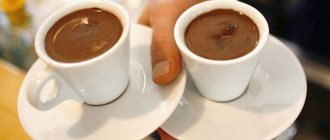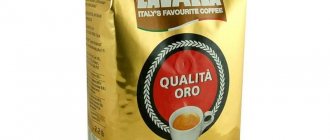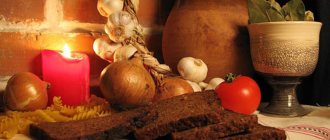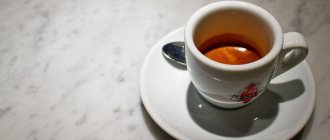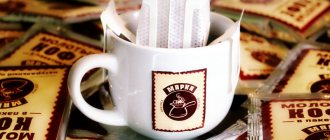Coffee has long become not just a drink, but a reason for informal communication. Organizers of various seminars, conferences, trainings, as well as corporate meetings and brainstorming sessions took full advantage of this. They proposed breaking up events with short breaks, called coffee breaks. Gradually, certain rules, traditions and style of such breaks were formed. What is a coffee break, what should be the correct organization of a coffee break and what is the traditional menu for it?
History of origin
The tradition originates in the town of Stone, Wisconsin at the end of the 19th century. The wives of Norwegian immigrants were the first to arrange such a break. Local residents later founded the Stoughton Coffee Break festival, which has been held annually since 1880. The Pan American Coffee Bureau popularized coffee gatherings to raise awareness of the beans in America. In 1936, after an advertising campaign, Americans began to take coffee breaks during business negotiations. Over time, it began to be arranged in Europe. In Russia, such events spread in the late 1990s.
How to organize a coffee break
The organization of coffee breaks during a seminar or conference should be carried out taking into account four main factors:
- Place. The coffee break should take place in a room close to the conference room. At the same time, it is important that it is convenient to approach the tables. If there is no suitable room, it is possible to organize such a break in the hall, although this is not always convenient, and with a busy meeting schedule, even in the same room where the main event is taking place.
- The menu depends on the guests, from an economy option for simple office clerks to a premium option for executives.
- Equipment and utensils. You will definitely need a cocktail or buffet table, a coffee machine or coffee maker. Plastic plates are considered bad manners in Russia, although foreigners prefer disposable tableware and individually packaged portioned foods for hygiene reasons. Napkins are a must.
- Service. Self-service without waiters and managers is encouraged. This type of event organization allows guests to warm up after sitting for a long time, walk along the table and choose the treats they like.
General information about coffee breaks
A coffee break is an important part of the working day during business meetings, scientific conferences, symposia, etc.
At formal meetings, it is carried out at strictly designated times. A table with drinks and various snacks is set in the conference room or special room. In offices, such breaks can be held for employees in the morning and evening in the rest area.
Purpose of the event
During formal events, the need to process large amounts of information and the sitting position quickly drain the body. Therefore, the organizers arrange a coffee break, the purpose of which is to restore strength with a cup of aromatic drink. This time can be used to comprehend the knowledge gained, communicate with other participants, and relax.
Event etiquette
According to generally accepted rules, a coffee break should be held strictly within a certain time frame, during a meeting or discussion. During a snack, it is unacceptable to discuss work issues, organize debates, or ruin professional topics. But at the same time, this is a great opportunity to enjoy a casual conversation and make new acquaintances. It is considered bad form to start discussing other participants untimely.
Drinks and light snacks should be served using a serving cart or trays. There should be no papers on the table. Those treating themselves must not break the accepted order: cutlery - snacks - drinks. It is better to approach the table again than to take too much food at once. One of the key criteria for a successful coffee break is space, and the basic principle is self-service and the absence of an assigned place.
Event Rules
When planning a coffee time-out, the status and number of participants and the duration of the event are taken into account. Typically, a maximum of 40 minutes is allocated for it. Tea, coffee and light meals are provided.
Etiquette
Organizing an event begins with choosing a venue. For a small number of guests, you can allocate a seating area in the room where the event is taking place. If there are more than 15 people, it is better to choose another room.
When holding a coffee break, adhere to the following rules:
- A period of 15 to 40 minutes is enough to take a break, but not enough for complete relaxation.
- Coffee breaks are arranged every 2.5-3 hours. If a long event is planned, interruptions are made 3-4 times.
- In addition to tea, coffee and other drinks, light snacks (canapés, sandwiches, sweet pastries) are served.
- The first coffee break takes place at the beginning of the meeting, the last - a buffet - after the end of the negotiations or conference.
- A pause involves communication, so music, TV and entertainment in the room will be unnecessary.
- You cannot take snacks with you into the meeting room.
The format of the event depends on the status of the participants and the type of meeting. At business negotiations, seminars or at work over a cup of drink, guests communicate in an informal setting, so it is better to organize self-service.
International meetings require a coffee break, which resembles a banquet with a high level of service.
Rules
A coffee break is an invariable attribute of a well-prepared event; it directly indicates the level of its implementation. The experienced team of the “Russian Traditions” chain of cafes and banquet halls in Moscow and St. Petersburg will help you organize a break during a corporate meeting at a professional level, select the optimal menu within the available budget, and present the dishes beautifully. The purpose of organizing a coffee break is to give the event participants the opportunity to relax, discuss the information they heard, and share their impressions. A short break mobilizes the listener’s attention, pushes him to take a fresh look at things and make the right decision.
Buffet and coffee break are similar, but not the same concepts. They differ in their motives and menu specifics. According to the format, participants are not assigned specific seats; they pour their own drinks and eat while standing. The duration depends on the format and duration of the meeting. As a rule, there are 2–4 coffee breaks per event, approximately every 2–3 hours. It is customary to organize it during the daytime, according to the agreed regulations. The menu should include light snacks and sweets - they are convenient to eat. Hearty, high-calorie dishes that are consumed using cutlery are not served. When preparing and compiling the menu, it is important to take into account the religion of the participants, health characteristics, and season. The higher the status of the participants, the more refined the service and the higher the level of food and drinks.
There are several types of coffee breaks:
- philosophical - consists of a seminar, a short break, including food, delicious drinks, discussion of philosophical issues is acceptable;
- buffet cocktail - a break occurs after a training, conference, tea, coffee, light snacks are offered;
- outdoor tea party - it can be held outdoors, but usually a banquet hall with the necessary equipment is chosen.
To prepare large-scale corporate events and negotiations, catering services are in demand, provided by catering restaurants. They include not only preparation and delivery of goodies, but also serving, table decoration, serving guests, and cleaning at the end of the meeting. The difficulty of running a coffee break flawlessly lies in its short duration, limited range of dishes and at the same time the need to satisfy the expectations of the participants.
Subtleties of organization
When preparing such a holiday, the menu and table setting are taken into account. The higher the position of the event participants in society, the more expensive the products. When creating a menu, you must remember that you are planning a snack, not a full lunch. Much attention is paid to the quality and quantity of drinks. For high-level meetings, natural coffee and tea are required. To keep them warm, you can use restaurant thermoses.
The choice of dishes depends on the nationality of the invited persons and the level of the event. For Europeans, hygiene is important, so they buy disposable plates and cutlery in individual packaging. Russians perceive such serving as a sign of economy. For influential people, choose porcelain, glass or crystal dishes.
For large events, baristas and coffee ladies are hired, whose duties include preparing and serving drinks.
Organizing a coffee break
How to organize the perfect coffee break? There is nothing complicated about this if you follow a certain algorithm. Four reference points of any coffee break:
- Place,
- Menu: drinks and snacks,
- Utensils and equipment,
- Service.
Each item on this list requires attention. Advice from a professional catering company will help you organize a coffee break of any level.
- First you should choose a place where the table will be set during the break. If the group of people is small, then you can allocate space in the same room where the main event takes place. If the group is more than 15 people, it is advisable to find an additional room for a coffee break.
- Drinks are an important part of a coffee break. As a rule, the first level of organization involves instant coffee and tea bags, water and packaged juice to quench your thirst. However, you can rent special thermoses in which drinks are served in hotel restaurants. Then guests will be able to receive natural coffee and well-brewed tea.
- If you decide to treat guests to coffee from the office coffee maker, then appoint a person in charge who will help guests cope with the preparation of the drink. After all, they may not know how to use this model and your break will drag on for a long time.
- There is a difference in organizing a coffee break for compatriots and foreign guests. For foreign delegations, the issue of hygiene always comes first, so individual packaging is needed for everything. Sugar, cream, milk, candies, cookies, cutlery, dishes and napkins - all this is best offered for single use in packaged form.
- Our compatriots perceive disposable tableware as evidence of a “cheap” approach. Therefore, for a coffee break, where the presence of respectable people is expected, cups for tea and coffee, glasses for water and common dishes for serving snacks should be made of glass or porcelain. Textile decoration of tables is desirable - tablecloths and napkins are welcome. This will be evidence of a high organizational level.
- A coffee break does not involve entertainment, only communication, so there is no need for music or a running TV.
- You can organize a coffee break on your own, but if you are holding a conference or seminar with a large number of guests, be sure to provide two or three assistants. They will help guests find their way, tell them where to get tea or coffee, where to wash their hands, or how to return to the meeting room later.
A few years ago, most large organizations preferred to use the services of catering companies, but today coffee breaks are more often held in-house. An exception is events at the international or representative level. The help of professionals is invaluable.
Menu options
Different menus are developed for seminars, international conferences, and business negotiations. They differ in the number of positions and types of drinks. The basic set includes serving coffee and tea with sweet pastries. During the coffee break, important people are given additional water, juices, and a lot of cold snacks.
Basic
Be sure to offer black and green tea bags and instant coffee. Additionally, lemon, cream, and sugar are placed on the table. Sweet pastries are served with drinks: muffins, cupcakes, chocolate and shortbread cookies.
Economy
This option is suitable for feeding office workers. In addition to standard drinks, the budget menu includes berry and fruit juices. Guests are offered canapés with various fillings (pate, cucumbers, ham, cheese), chocolates, and pastries.
Traditional
Such a pause is arranged at conferences or important business negotiations. Preference is given to more satisfying dishes compared to the budget option. The traditional menu contains sandwiches (with chicken and lettuce, boiled pork, salmon, salami), canapés and 2-3 types of cheese on skewers.
The list of drinks includes coffee beans, several types of tea (in bags), juices, sparkling and still water. For dessert, croissants, sweets and fruit are served.
Premium
The menu is developed for events where guests with VIP status gather. A small mistake can cost the organizers their reputation. They often hire catering companies to turn their leisure time into a mini-banquet.
The premium menu contains many items:
- natural coffe;
- black, green tea;
- juices;
- fruit drinks, lemonades from fresh fruits and berries;
- water in glass bottles (with or without sparkling water);
- meat and vegetable sandwiches;
- tartlets (with caviar, shrimp, cheese);
- canapés with different fillings;
- cheeses, fruits on skewers.
Guests can enjoy small cakes, pastries (strudel, charlotte, profiteroles), chocolate mousse, and sweet mini-pies. In addition to drinks, in addition to the basic set, honey, jam and sweetener are served.
Alcohol
Alcohol is included in the coffee break menu at semi-formal meetings or at the end of an event. In addition to standard drinks and dishes, it includes hot snacks and table wines.
What is a coffee break
A coffee break is a break of 20-40 minutes, which is taken during official events and business meetings for relaxation and informal communication. The coffee break is accompanied by cold and hot drinks and light snacks.
The fashion for coffee breaks came from the USA to Europe, and then to us. Trainers, coaches and group leaders were the first to take breaks in their performances in order to launch group dynamics to a new level, give participants the opportunity to communicate and increase the efficiency of assimilation of materials.
Then the fashion for coffee breaks came to business, which quickly recognized the opportunity. Often, it was during informal breaks that the fate of deals or contracts was decided. Today's coffee break format has its own rules, unwritten, but highly desirable to follow.
- Duration: no less than 20 and no more than 40 minutes.
- Frequency – every 2.5-3 hours.
- Hot and cold drinks and light snacks are required.
- The format is democratic, there are no managers or waiters during coffee breaks, everyone serves themselves.
- The higher the status of those present, the higher the quality of drinks and food, the more elegant the table setting and decoration.
Coffee break traditions from around the world
Residents of different countries set aside a few minutes every day to drink a cup of aromatic drink. For Ethiopians, such a holiday is an ancient ritual with many rules. Americans and Germans continue to work during the coffee break. Residents of Latin America, Sweden and Austria are accustomed to drinking coffee leisurely in the company of friends or colleagues.
USA
The phenomenon became widespread in the country when trade unions were allowed to give workers rest during the working day. Coffee timeout occurs every 1-1.5 hours, but Americans do not have a special break. They do not interrupt work or negotiations, so they prefer light snacks. You can use standard dishes (including paper glasses). 2-3 types of drinks made from natural grains are enough.
Ethiopia
For Ethiopians, buna tetu, which translates to “drinking coffee,” lasts about 3 hours. They do not welcome quick coffee breaks and do not limit themselves to 1 cup. Here, preparing and drinking a drink is a ritual that shows respect and welcome towards those invited.
The ceremony is carried out in compliance with the following rules:
- Before roasting the beans, incense is burned to ward off evil spirits.
- The youngest woman in the house does the cooking.
- The roasted grains are given to all guests to smell so that they can feel the aroma.
- The drink is prepared in a jebene, a vessel for brewing coffee.
- The eldest member of the family tries it first.
- Each guest drinks 3 cups. Ethiopians believe that the first gives a taste, the second brings good luck, and the third blesses.
- During such a break it is not customary to discuss business.
Guests are offered several varieties of different strengths. The aromatic drink is poured into cups made of bamboo, ceramics or porcelain. They do not have handles, so you need to hold them by the rim. Buna tetu can be held 3 times a day.
Sweden
Relaxing with a cup of coffee is called fika. It is part of everyday life for Swedes. In offices, universities, schools, breaks are taken at least 2 times a day for 10-30 minutes. Locals drink a fresh drink in the company of friends and colleagues. Fika is a reason to relax and take your time, so business conversations are not allowed at this time.
Scandinavians add fresh beans to the grounds to brew coffee a second time. That's why in Sweden they prefer low roasting. Traditionally, they offer 7 types of homemade pies. Swedes drink coffee with a piece of cake, a cinnamon roll, chocolate chip cookies or savory snacks. They often add alcohol to the drink.
Latin America
In the region, it is customary to take a break in the afternoon, called Merienda. This is a light snack between a hearty lunch and dinner. It includes coffee, tea, hot chocolate, alcohol. For snacks they offer sliced fruits, cookies, and yogurt. In summer, hot drinks replace cocktails and juices. Argentines and Paraguayans rest around 5 pm. They drink mate or herbal tea with toast, buns, and cake. Honey, butter, and jam are always placed on the table.
Austria and Germany
In these countries, a second breakfast is served from 10 to 11 am. Many people prefer a natural drink, which is served with a large number of snacks in separate plates. Austrians don't like to drink it in a hurry. Over a cup of strong coffee with cream, they talk with friends and read newspapers. In Austria, it is always served with a glass of water and a bagel. There are no long coffee breaks in Germany. During working hours, Germans rest 2 times a day for 5-10 minutes. They drink coffee without interrupting their work and relax during lunch.

